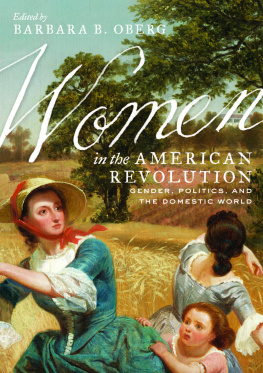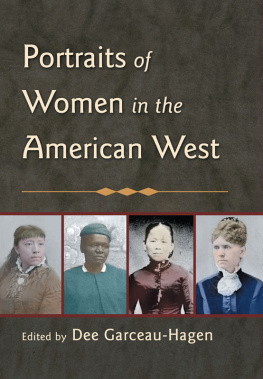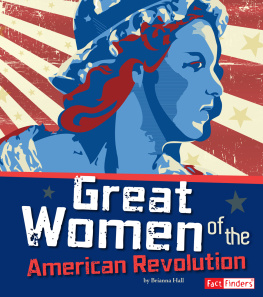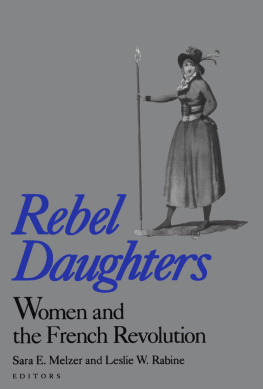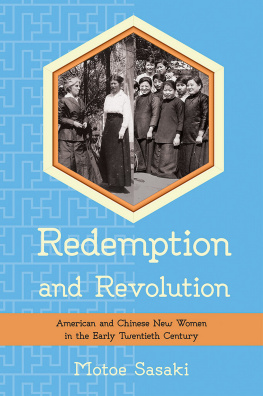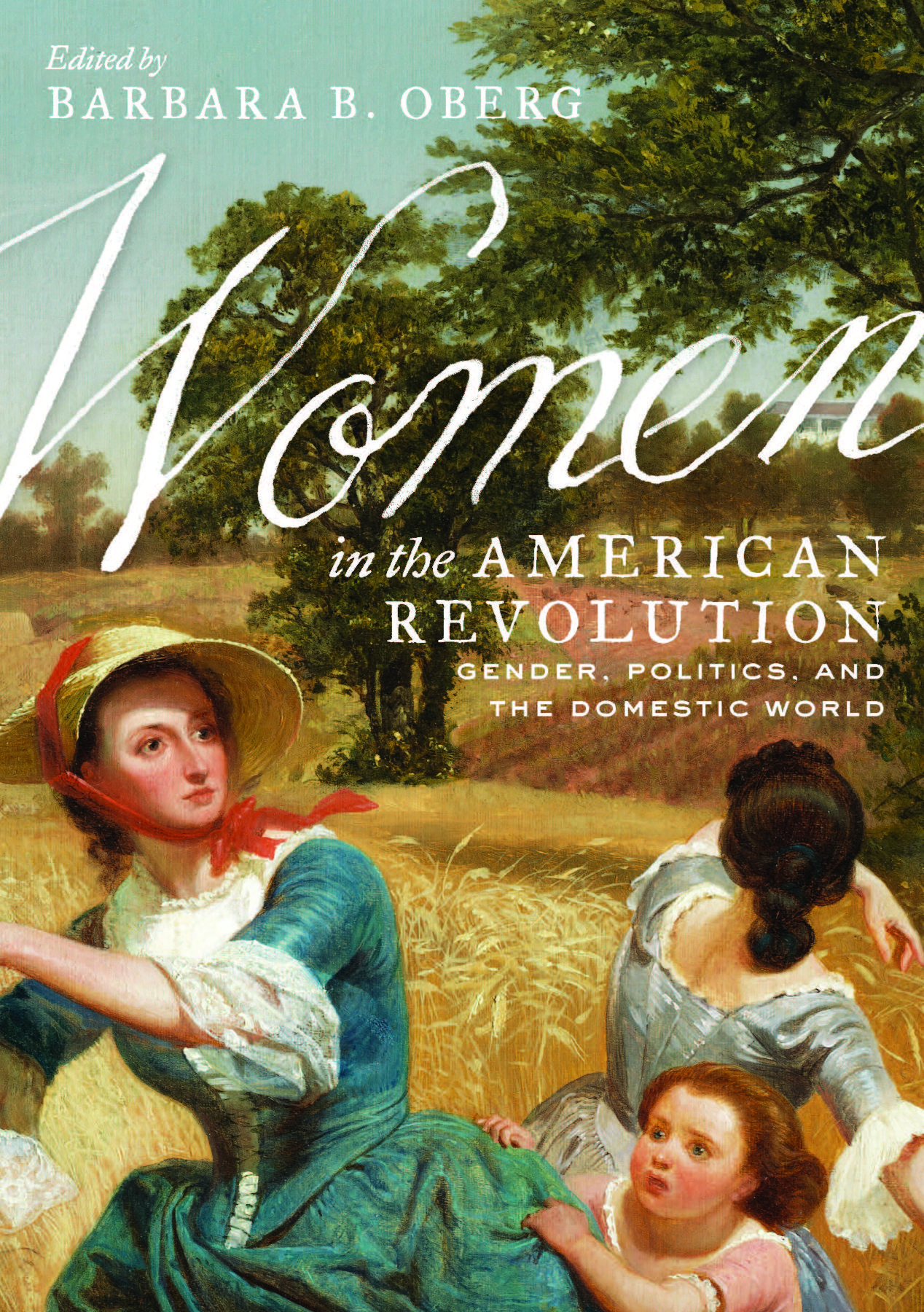Women in the American Revolution
Gender, Politics, and the Domestic World
edited by barbara b. oberg
University of Virginia Press
Charlottesville and London
University of Virginia Press
2019 by the Rector and Visitors of the University of Virginia
All rights reserved
Printed in the United States of America on acid-free paper
First published 2019
9 8 7 6 5 4 3 2 1
Library of Congress Cataloging-in-Publication Data
Names: Oberg, Barbara, editor.
Title: Women in the American Revolution : gender, politics, and the domestic world / edited by Barbara B. Oberg.
Description: Charlottesville : University of Virginia Press, 2019. | Includes ibliographical references and index.
Identifiers: LCCN 2018054112 | ISBN 9780813942599 (cloth : alk. paper) | ISBN 9780813942605 (ebook)
Subjects: LCSH : United StatesHistoryRevolution, 17751783Women. | United StatesHistoryRevolution, 17751783Biography. | WomenUnited StatesSocial conditions18th century. | WomenPolitical activityUnited StatesHistory18th century.
Classification: LCC E 276 . W 66 2019 | DDC 973.3082dc23
LC record available at https://lccn.loc.gov/2018054112
Cover art: Detail of Mrs. Schuyler Burning Her Wheat Fields on the Approach of the British, Emanuel Gottlieb Leutze, 1852, oil on canvas. (Los Angeles County Museum of Art, Bicentennial gift of Mr. and Mrs. J. M. Schaaf, Mr. and Mrs. William D. Witherspoon, Mr. and Mrs. Charles C. Shoemaker, and Jo Ann and Julian Ganz, Jr. [M.76.91])
To Pauline Alice Maier, 19382013,
and to
C. Dallett Hemphill, 19592015
Jan Ellen Lewis, 19492018
Scholars, Teachers, Mentors
Contents
Rosemarie Zagarri
Sara Collini
Kaylan M. Stevenson
Susan Hanket Brandt
Maeve Kane
Martha J. King
Mary V. Thompson
David Waldstreicher
Ami Pflugrad-Jackisch
Serena R. Zabin
Kimberly Nath
C. Dallett Hemphill
Sheila L. Skemp
As Rosemarie Zagarri asks in the Introduction, What did the American Revolution mean toand forwomen? Over the past several decades, the subject of the role and status of women during the War for Independence has attained its rightful place in the study of early American history. At a time of significant disruptions in daily life and radically changed expectations of what a womans place in a marriage, the household, and the community ought to be, American women were called on to perform a variety of tasks and assume multiple roles. They showed patriotism by supporting boycotts of British goods and encouraging manufacturing at home; they raised funds to feed and clothe the troops; and they took over the management of the farm or family business to keep the household running smoothly in the absence of men. Some traveled with the army in supporting roles. Others remained loyal to the British crown, weakening or destroying their relations with family members, friends, and neighbors. Women wrote poetry, novels, plays, and essays. They exchanged letters with husbands away in battle, relatives, and friends. Some kept a journal or diary in which they recorded the routine of daily life in wartime, and some wrote more intimately, sharing the emotional turmoil in which they lived. These records, public and private, yield poignant and little-known stories that allow us to rethink the world that women inhabited during a time of political and economic upheaval, social change, and armed conflict that we have long referred to as the era of the American Revolution. It is an era that will never cease to demand our attention. As Sheila Skemp observes in the Afterword, Anthologies produce at least as many questions as they do answers, thus preparing the way for new and exciting perspectives. This is what we have set out to do.
Women in the American Revolution: Gender, Politics, and the Domestic World had its origins in June 2014, when a group of early American historians met in Williamsburg, Virginia, to share their work and suggest how it might add to and reshape our understanding of the revolutionary era. We began by posing a series of questions: What was the state of the field and how had it changed over the preceding decades? What questions had been answered and what required additional exploration? Where was the study of the era of the American Revolution headed? The conference and now this volume will, we hope, take another step toward resolving some questions and, just as important, give us new and challenging ones to consider.
Barbara B. Oberg
This conference was convened under the auspices of the National Society of the Sons of the American Revolution (SAR), led by the energetic and dedicated past President General Joseph W. Dooley. Colin W. Campbell, president of the Colonial Williamsburg Foundation, and Karin Wulf, director of the Omohundro Institute of Early American History and Culture at the College of William and Mary, provided wisdom and moral support throughout. Kate Haulman, associate professor of history at American University, opened the conference and suggested the issues that would be raised. Rosemarie Zagarri closed the proceedings with broad and perceptive comments that highlighted the contributions of each paper.
The generous support of the following organizations and individuals also helped to make the conference possible: the George Washington Endowment Fund of the National Society of the SAR; the George Knight-Kenneth C. Patty Memorial Trust Fund of the Virginia Society of the SAR; the George Mason Chapter and the George Washington Chapter, both of the Virginia Society of the SAR; George Washingtons Mount Vernon; Arlington Blue Top Cabs; the WinSet Group, LLC; the California Society SAR Ladies Auxiliary; Constance Barker; Cynthia Bigbee; Janet Brown; J. Thomas Burch, Jr.; Karen A. Carlson; Marilyn Chilton; Karen Dodd; Karen and Jim Faulkinbury; Mr. and Mrs. John H. Franklin Jr.; Un Hui Yi Fosdyck; Joseph R. Godfrey, Ph.D.; Lisa Gregory; Barbara Magerkurth; S. John Massoud; Eugene D. Melvin; Samuel C. Powell, Ph.D.; and Timothy E. Ward. Leslie S. Noble, Stephanie Saulnier Lally, and Michele Derosa provided valuable and patient assistance in arranging lodging, meals, and meeting space at Colonial Williamsburg. Manav Kapur, a graduate student in history at Princeton University, played a crucial role in readying the manuscript for submission. We offer our thanks to all of these people.
Women in the American Revolution
Rosemarie Zagarri
Women played an integral role in all phases of the revolutionary process: in the prerevolutionary movement to resist British policies, in the struggles during the War for Independence, and afterward, in efforts to build a new nation. Nonetheless, after decades of scholarship on this topic, there is still no consensus on a critical question: did the Revolution benefit women or actually reinforce traditional gender roles? For white women, much of the attention thus far has been on their political or legal status, which, at least on the surface, did not change much. The doctrine of coverture, which declared women legally subordinate to their husbands or fathers, persisted. Married women could not own property, make contracts, or sue (or be
Yet other historians, who have looked beyond formal legal and political institutions, have discovered whole new realms of womens revolutionary experiences and ideas. The coming of the Revolution encouraged womens interest in, and involvement with politics. Women participated in boycotts against Britain, protested British policies, and suffered under the travails of war. In this process, womens role was politicized, producing a construct that the historian Linda Kerber has called republican motherhood. Even as wives and mothers women could make sacrifices for the public good and promote the revolutionary cause. They could influence their husbands and sons, encouraging them to become virtuous citizens of the republic. Women might also become interested in political ideas. As female politicians, they now felt free to express their views in public writings or in private salons. Women, it is clear, exerted a profound, though largely indirect, impact on the countrys political life.

